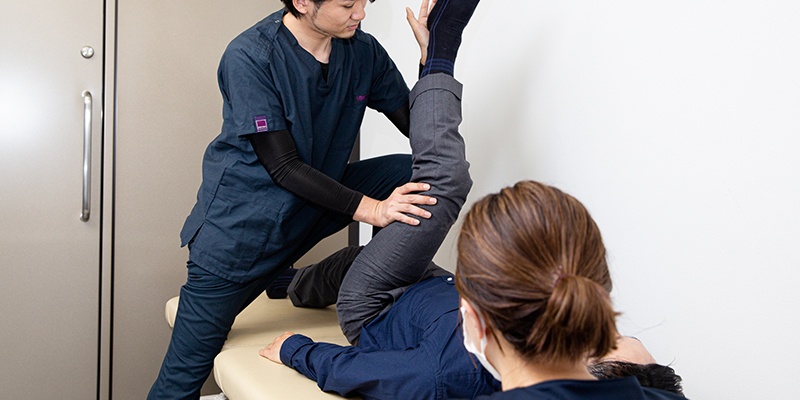Exercise Therapy for Cancer Care

What is exercise therapy for cancer care?
Exercise therapy as part of cancer care not only is expected to enhance patients’ resilience but also improve patients’ quality of life.
We try to mitigate a variety of patients’ physical and psychological disturbances that may be caused by cancer itself, treatment sequelae, and side effects associated with treatment.
In cancer treatment, pain due to cancer itself, surgery, treatment with anticancer drugs (chemotherapy), radiation therapy, etc. may cause loss of appetite, malaise, or reduction or damage to the physical functions.
This variety of disturbances interferes with patients’ activities of daily living, making it difficult to maintain their daily life and significantly compromise their quality of life.
“Exercise therapy for cancer care” is essential to improve patients’ quality of life and maintain their activities of daily living.
Previously, exercise therapy for cancer care was performed to restore the function that was lost due to a disorder.
However, in recent years, “prophylactic exercise therapy for cancer care” has become increasingly used to prevent complications and sequelae associated with treatment, by starting exercise therapy soon after the diagnosis of cancer.
Exercise therapy for cancer treatment emphasizes on the use of prevention measures and is the primary difference from those of other treatments such as that used for stroke.
Since “exercise therapy for cancer care” is performed in parallel with the patient’s medical treatment, it can be performed in any stage of treatment or when changes in the disease condition occur.
Purpose of Exercise Therapy for Cancer Care by Stage
| Cancer diagnosis | Start of treatment | Recurrence/metastasis | When the patient is no longer able to receive active treatment |
|---|---|---|---|
| For prevention | For recovery | For maintenance | For mitigation |
| It is initiated soon after the diagnosis of cancer. It aims to prevent the occurrence of a functional disorder. | It aims to maximize functional recovery when functional disorders develop or muscular/physical strength decreases. | It aims to maintain/improve the exercise capacity in patients with functional impairment caused by cancer growth. | It aims to maintain and improve QOL. |
Malaise caused by cancer is associated with spasmodic contraction of muscles due to cancer pain and subsequent accumulation of lactic acid.
The lactic acid that causes this malaise can be removed by massage to resolve malaise.
In addition, lymph drainage2 can be performed for lymphedema1 to improve symptoms.
*1 Unrecovered lymph fluid accumulates in the lymphatic vessels under the skin of an arm or leg close to the site of cancer treatment, causing swelling.
*2 Massage that activates the lymphatic flow to collect and expel unnecessary foreign substances and wastes.
At NEO Clinic Tokyo, we provide the “exercise therapy for cancer care” according to each patient as adjuvant therapy for cancer treatment following the policy of “precision medicine.”
